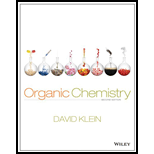
(a)
Interpretation:
The target molecules should be drawn for the given staring molecule by using its structure.
Concept Introduction:
Lindlar reduction: The
Soda amide (
Birch Reduction: The conjugated alkynes and benzynes in the presence of sodium metal in liquid ammonia and alkyne produced a non-conjugated diene system. The alkyne involves sodium
Meta-chloroperoxybenzoic acid (m-CPBA): This reagent is extremely useful reagent most frequently encountered in the synthesis of
(b)
Interpretation:
The target molecules should be drawn for the given staring molecule by using its structure.
Concept Introduction:
Lindlar reduction: The alkenes or alkynes can be reduced to alkanes with
Soda amide (
Birch Reduction: The conjugated alkynes and benzynes in the presence of sodium metal in liquid ammonia and alkyne produced a non-conjugated diene system. The alkyne involves sodium
Meta-chloroperoxybenzoic acid (m-CPBA): This reagent is extremely useful reagent most frequently encountered in the synthesis of epoxides when added to alkenes or alkynes.
Want to see the full answer?
Check out a sample textbook solution
Chapter 10 Solutions
Organic Chemistry
 ChemistryChemistryISBN:9781305957404Author:Steven S. Zumdahl, Susan A. Zumdahl, Donald J. DeCostePublisher:Cengage Learning
ChemistryChemistryISBN:9781305957404Author:Steven S. Zumdahl, Susan A. Zumdahl, Donald J. DeCostePublisher:Cengage Learning ChemistryChemistryISBN:9781259911156Author:Raymond Chang Dr., Jason Overby ProfessorPublisher:McGraw-Hill Education
ChemistryChemistryISBN:9781259911156Author:Raymond Chang Dr., Jason Overby ProfessorPublisher:McGraw-Hill Education Principles of Instrumental AnalysisChemistryISBN:9781305577213Author:Douglas A. Skoog, F. James Holler, Stanley R. CrouchPublisher:Cengage Learning
Principles of Instrumental AnalysisChemistryISBN:9781305577213Author:Douglas A. Skoog, F. James Holler, Stanley R. CrouchPublisher:Cengage Learning Organic ChemistryChemistryISBN:9780078021558Author:Janice Gorzynski Smith Dr.Publisher:McGraw-Hill Education
Organic ChemistryChemistryISBN:9780078021558Author:Janice Gorzynski Smith Dr.Publisher:McGraw-Hill Education Chemistry: Principles and ReactionsChemistryISBN:9781305079373Author:William L. Masterton, Cecile N. HurleyPublisher:Cengage Learning
Chemistry: Principles and ReactionsChemistryISBN:9781305079373Author:William L. Masterton, Cecile N. HurleyPublisher:Cengage Learning Elementary Principles of Chemical Processes, Bind...ChemistryISBN:9781118431221Author:Richard M. Felder, Ronald W. Rousseau, Lisa G. BullardPublisher:WILEY
Elementary Principles of Chemical Processes, Bind...ChemistryISBN:9781118431221Author:Richard M. Felder, Ronald W. Rousseau, Lisa G. BullardPublisher:WILEY





